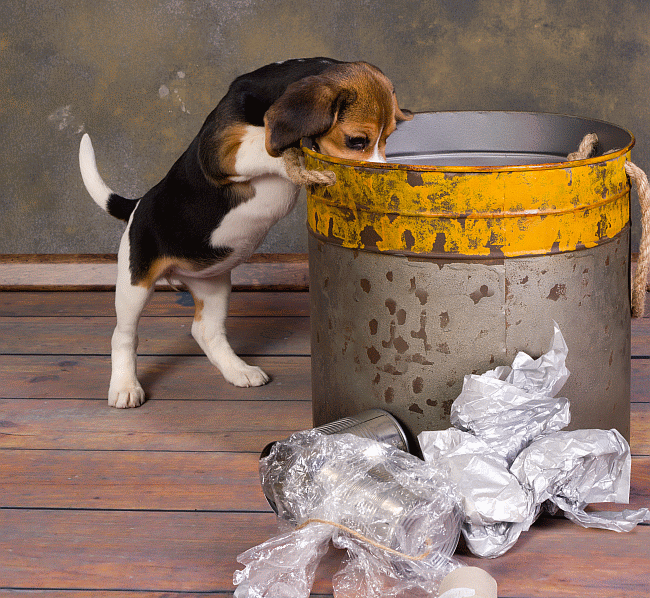
There is nothing sweeter than the petite paws and tiny nose of a new puppy. Bringing an 8-week old pup into a big home can be intimidating during the first few days of adjustments. One of the most important aspects of acclimatizing a new dog to his home, is learning how to handle and play with a small puppy. Additionally, preparing your home for his arrival by removing hazards from his play space, will be equally as important. Review the details below and gain insight on how to navigate the particulars of rearing a puppy as well as the items which could potentially be hazardous in your home.
Playtime and Handling
The first note to remember while playing with puppies, is to be gentle with them. Their small stature and developing body, makes their bones and joints fragile and easily injured. When lifting the puppy, be sure to give support under his armpits, and under his hind legs. If he is playing with children, see that his ears or paws aren’t being pulled.
In the first weeks of playing, keep your puppy in an enclosed space for his safety. This way he will be able to explore freely without danger of any kind. Doing so will build your pup’s confidence in this new environment, and will also help strengthen his small body. Always supervise your fuzzy friend, since puppies can trip, slip, get stuck in drawers or locked in rooms if unattended.
Help your puppy learn good habits by establishing boundaries with him. A sweet lick on the nose is nice, but nibbling is only cute for a few weeks. It might not seem like a big deal to let your baby Beagle chomp on your arm, but allowing that behavior will present training difficulties that will be harder for your dog to learn.
Similarly, in the early months of a dog’s life, it is imperative for the owner to train the dog how to be handled. This includes everything from cuddling and holding, to sifting through their toes, holding their paws, and handling their mouth and teeth. If they are used to having human fingers in their mouths, they will be more comfortable with having their teeth cleaned; likewise if they are comfortable having their paws held, clipping toe nails won’t be such a difficulty. The more your puppy is handled, the easier it will be to groom, clean and play with him.
Safety in the House
Although the saying goes “curiosity killed the cat,” dogs are also known for getting into trouble on both their outdoor expeditions and in the indoor playground. Every new item in the vicinity becomes a piece of interest worth sniffing, licking, pawing at and occasionally (gasp!) swallowing. Help your puppy succeed by removing anything in the house that could distract or entice him. Instead, provide ample toys and items he can freely gnaw on, so that your shoes, furniture, and other dangerous pieces will be less interesting to your puppy pal. A few precautionary steps could save your dog from a lot of discomfort, and you from a trip to the vet. Look over the list below to help guard against tempting trinkets that may pose a threat to your new dog:
Choking Hazards
- rubber bands
- small toys
- dolls
- rubber balls
- plastic wrap
- balloons
- coins, buttons, beads,
- game pieces
- decorations
- rocks
- Hard candy
- golf balls (playing fetch with golf balls is dangerous for larger dog breeds)
- *Be wary of items like rawhide or bread, which is often given to dogs as a treat or meal scraps. Bread is so dry that dogs can struggle to swallow it, and rawhide can get lodged in your dogs throat.
Sharp Items
- sticks
- pens/pencils
- chicken bones
- toothpicks
- thumb tacks
- needles
- screws/nails
- scissors
- kitchen knives
Poisonous Items
- alcohol
- avocado
- apricot
- chocolate
- caffeine/coffee grounds
- raisins/grapes
- peach pits
- onions
- garlic
- cleaners/detergents
- glue/craft supplies
- pill bottles/medications
- batteries
- bleach
Further Precautions
- Keep lids on all trash cans in the kitchen and bathrooms
- Make sure all pest control poisons have protective covers or are kept far from your dog
- Plant fertilizers and mulches should not be left out around dogs, as they are poisonous if ingested.
- Make sure all medical cabinets are sealed off, and removed from pet access.
- Be sure that leftovers have no bones before you give them to your pooch
- See that all children’s toys are kept in bins and off the floor where they might tempt your dog.
- Keep toilet lids down, and rubber bath toys and loofah sponges put out of reach.
- Supervise your dog when he is playing with chew toys, since pieces can break off and become a choking hazard.
One of the best ways to remove the dangers, is to organize household items and toys into containers, drawers and bins. This will make your home a tidy place, and will provide a safe environment for your pup to grow and thrive.

